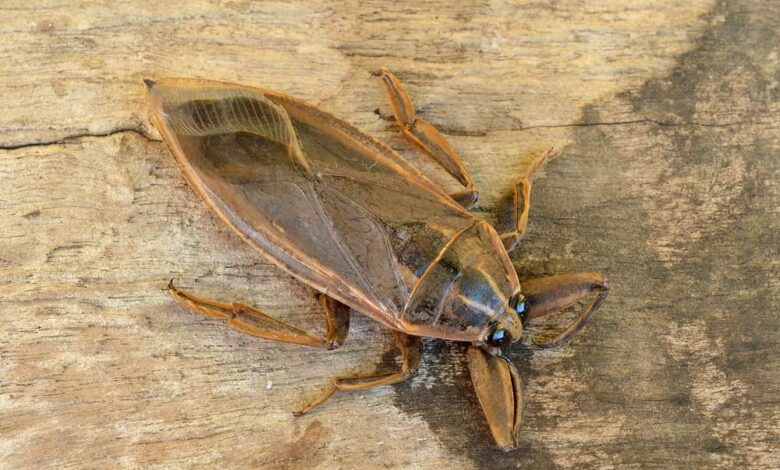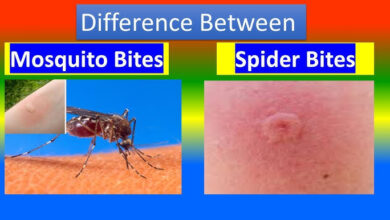How to Get Rid of a Giant Water Bug in Your Home, According to Experts

Are you tired of being a reluctant host to these creepy, crawly creatures that seem to have taken up residence in your home? We’re talking about none other than the dreaded giant water bug. These pesky bugs are notorious for their intimidating size and unpleasant odor. But fear not! In this blog post, we’ve gathered expert tips on how to get rid of a giant water bug once and for all. So let’s dive in and bid farewell to these unwanted guests!
What is a giant water bug?
Giant water bugs are one of the largest insects in North America, and they can be really pesky. They get their name from their size—they can be up to two inches long!
If you spot a giant water bug in your home, don’t panic. Experts say there’s no need to call an exterminator or go crazy trying to get rid of it on your own. Here are three simple steps to take:
1. Check for sources of water: Giant water bugs like water so make sure there isn’t any standing water around where they’re living. If you find any pools or puddles, clean them up right away.
2. Seal cracks and crevices: Giant water bugs love to live in tight spaces, so keep an eye out for places where they could enter from outside (like doors and windows). Try to seal up any cracks or crevices by putting Vaseline or hot glue on them.
3. Get rid of all potential food sources: Giant water bugs are attracted to moisture, so make sure to dispose of anything that might give them food (like spilled food or pet food).
How to identify a giant water bug in your home
If you’re seeing giant water bugs in your home, there’s a good chance they’re trying to invade! These pesky pests can grow up to 2 inches long and have an orange-brown body with black spots. When disturbed, these bugs will spray water from their abdomens.
To get rid of these unwelcome guests, follow these tips from experts:
1) Check for clues that the bug is living in or near water: If you see the bug frequenting water sources like sinks or ponds, it may be living there. Look for any evidence of breeding–like eggs or larvae–and take action if you find them.
2) Seal off any potential entry points: Keep all pools and spouts closed, seal cracks around windows and doors, and clean up anything that could provide a hiding spot for the bug.
3) Get rid of food sources: Banish all discarded food items, especially pet foods and bird feeders. The bug loves sugary substances and will feast on them elsewhere if left unchecked.
4) Spray the bugs with insecticide: If step two doesn’t work, spraying the bugs with an insecticide may be your only option. Be careful to use a safe product; overuse can kill other household creatures as well as the bugs you’re trying to eliminate.
How to get rid of a giant water bug in your home
If you live in a place where giant water bugs are common, it’s time to start getting rid of them. Giant water bugs, also known as terebrantines, can measure up to 2 inches long and have a leg span of up to 3 inches. They’re native to Asia but have been spotted in the US and Europe, where they often invade homes through water sources or drainpipes.
Here are some tips from experts on how to get rid of giant water bugs:
Seal any cracks or openings around your home that allow these pests entry. This includes caulking and weather stripping around doors and windows, as well as around any pipes or drains that could provide an entrance.
This includes caulking and weather stripping around doors and windows, as well as around any pipes or drains that could provide an entrance. Use bug spray when seeing these pests outside . A strong insecticide will kill them on contact, so use it liberally where you see them congregating. Be sure to read the ingredients before using anything inside your home, because some products contain chemicals that could harm other living things.
A strong insecticide will kill them on contact, so use it liberally where you see them congregating. Be sure to read the ingredients before using anything inside your home, because some products contain chemicals that could harm other living things. Try trapping the bugs . If you see these pests indoors but don’t have access to bug spray or traps, try filling
Conclusion
If you are experiencing an issue with a giant water bug in your home, it is important to consult with a professional. Experts will be able to identify the root cause of the problem and provide you with the appropriate solution. In the meantime, following some tips provided by experts may help reduce or eliminate this nuisance. When giant water bugs invade your home, take these steps!



